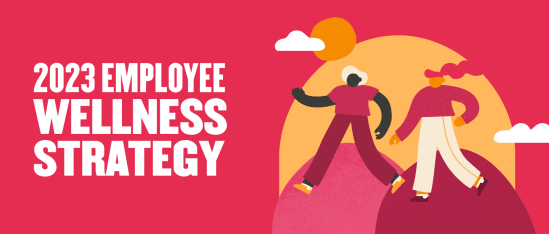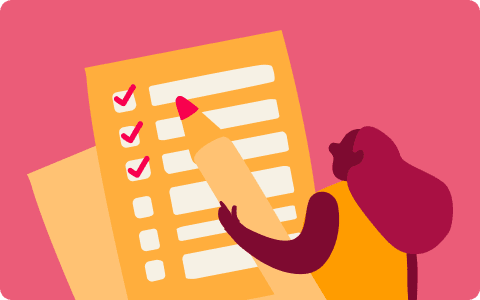Wellness is more than a buzzword. It’s the key to keeping your employees happy and healthy as we head into 2023.
After almost three years of living and working under pandemic conditions, today’s workforce needs help and support. According to Mckinsey, more than half of professionals surveyed in their report stated that they felt anxious in the past week, and 42 percent said they felt depressed in the past week. In addition to these two facts, 46 percent of those who returned to working on-site felt that the move back to the office negatively impacted their mental health.
This piece will examine how companies can support workplace wellness to ensure people feel and perform their best in the new year.
Improve healthcare costs and benefits
The key to supporting your people is giving them the means to access the care they need, including emotional and mental health care. With rising health care costs compounding with general inflation, today’s professionals find it hard to find the time or cash to take care of their health needs. People’s emotional and mental health are in crisis.
Today, almost one billion people worldwide grapple with mental health conditions. It isn’t something employers can afford to ignore, and it’s why 65 percent of employers surveyed by Business Group on Health said that health and wellbeing will continue “to play an integral role in workforce strategy”—and that’s up from 42 percent in 2021.
In addition to providing more comprehensive physical and mental healthcare coverage, small, cost-effective programs can go a long way toward improving your people’s mental health and wellbeing at work:
- Offer more schedule flexibility and mental health days to take the pressure off and improve work-life balance
- Introduce employee-run mental health stories programs to provide people with a safe space to share their experiences with each other at work
- Provide paid subscriptions to meditation and fitness apps
These low-cost programs can make a real difference when added to your healthcare and wellbeing offerings and can help your people get the support they need to remain healthy and productive.
Survey your people to understand how they feel
The best way to understand how your people feel is to ask them. It’s also important to ensure your people feel comfortable responding openly and honestly. Anonymous pulse surveys are great tools that can help your people confidently voice their concerns and remove any pressure or worry about losing their jobs.
According to the APA, over 88 percent of today’s workforce reports experiencing burnout, and 60 percent report high levels of burnout. Burnout has become almost an accepted part of the workplace worldwide, with 40 percent of those surveyed by Asana stating that burnout is an inevitable part of success.
When companies give people the opportunity to voice how they feel, explain what they expect of their workplace, and what they need to succeed professionally, it’s the first step to getting their people the help they need.
Prioritize mental health training for company leaders
To fully support your people’s mental health and wellbeing, company leaders need training to help them address issues when they arise in the workplace. Training in this area can help your managers understand how and when to take what kinds of action.
According to Forrester, 70 percent of executives believe they promote a positive work environment, including work-life balance, encouraging PTO, etc. However, this number isn’t in line with how the professionals working under them feel: Only 53 percent feel encouraged to take PTO, and only 46 percent feel supported to take time off for mental health purposes (therapy, etc.).
Support for mental health and wellness must come from the top. When leaders drive people-first initiatives, they contribute to building an exceptional company culture where people feel valued. This translates into higher employee engagement, satisfaction, and efficiency—ultimately improving the company’s bottom line.
Actively promote your people’s wellbeing
Research from the University of Chicago found that a person experiencing mental health issues can cost their company $15,000 per year.
But, companies that invest in mental health programs see an average ROI of four dollars for every dollar spent. In other words, when companies invest in their people’s mental health, they see huge ROI. But how can companies invest in their people’s wellbeing and the productivity that follows?
Mental health programs at work don’t necessarily have to cost anything. Open communication is fundamental to building a culture of trust where people feel comfortable expressing themselves and their concerns honestly.
The simple act of letting your people know you hear and understand them as people first goes a long way when it comes to supporting mental health and wellbeing. Companies can add to that support by building flexibility into people’s schedules. Give them a chance to take a break during the workday, whether it’s with mindfulness training, yoga classes, a meditation room, or an app that helps with stress management.
According to Indeed.com, companies that offer programs like these enjoy higher employee engagement, productivity, and retention rates. They also enjoy reduced healthcare costs and improved morale.
Recommended For Further Reading
Prioritize time off and work-life balance
Paid time off is a must for the health and wellbeing of today’s workforce. If in the past, it was typical to take time off for a week-long vacation or a serious illness, today’s workforce expects flexibility in time off for various reasons. This means people can take off for vacation, doctor’s visits, caregiving, or other personal needs without feeling stressed about the repercussions of their time off.
The use of PTO differs from company to company, person to person, and country to country. One measure of work-life balance is the amount of time people devote to personal care. Data from OECD countries shows that most people in the region dedicate 15 hours, or 63 percent of the day, to personal care (including eating, sleeping, and leisure). These statistics differ from country to country, and while women may work fewer hours on average, they don’t typically have more leisure time. Italy has the overall best work-life balance, followed by Denmark and Norway.
The key to promoting work-life balance is listening to your people and allowing them to work flexibly in a way that works for them and their lifestyle. If letting someone on your team leave early twice a week to pick up their children, take time for a hobby, or use a half-day once a month for volunteering purposes makes them feel happy and fulfilled, you’ll give them the feeling that you trust them. And when people feel trusted, they give back with higher rates of productivity, retention, and more.
Investing in mental health programs is an investment in the future
In 2023, prioritizing mental health is a must for companies looking to keep their people happy and healthy. By reducing anxiety and depression and giving people the opportunity to invest in themselves, workplaces will see giant benefits, including an uptick in retention, overall happiness, productivity, and ROI per person.


